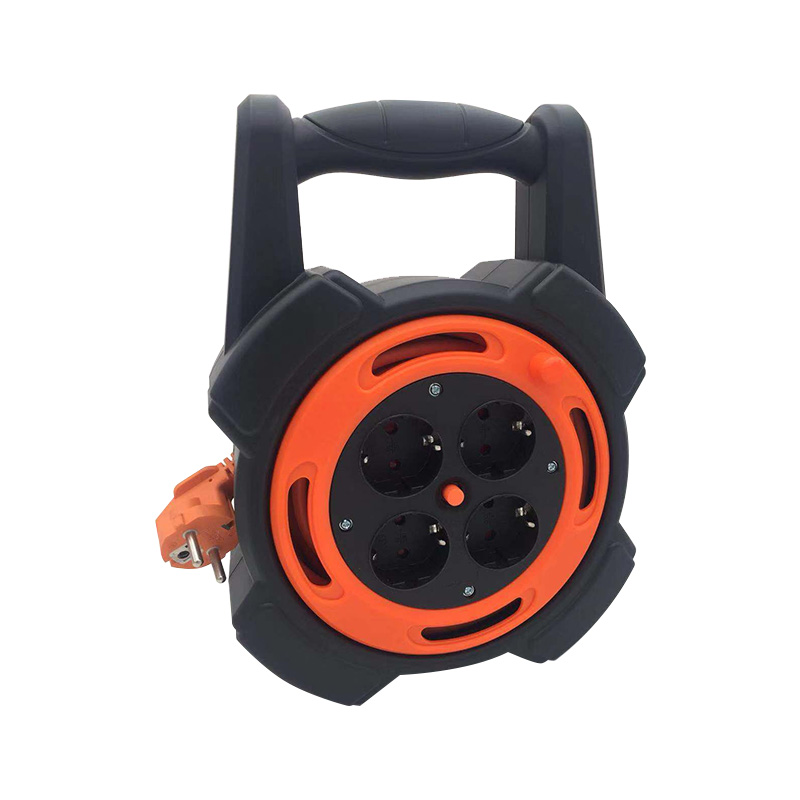Submit feedback
How to balance the strength, weight and portability of a cable reel?
 2025.04.17
2025.04.17
 Industry News
Industry News
Balancing the strength, weight, and portability of cable reels is a complex design challenge, especially since the requirements for these properties may conflict in different application scenarios. For example, industrial scenarios may require high strength and durability, while stage lighting or mobile equipment may focus more on lightness and portability.
1. Material selection and optimization
(1) Lightweight materials
Aluminum alloy:
Advantages: light weight, high strength, strong corrosion resistance, suitable for scenarios requiring portability (such as stage lighting, outdoor activities).
Notes: high cost, need to pay attention to surface treatment to enhance wear resistance.
High-strength plastic:
Advantages: extremely light weight, corrosion resistance, easy to shape, suitable for small or low-load applications.
Notes: limited strength and heat resistance, not suitable for high-voltage or heavy cables.
Composite materials:
Such as carbon fiber or glass fiber reinforced plastic, with high strength and low weight.
Advantages: suitable for high-end scenarios, but high cost.
(2) Optimized use of steel
High-strength steel:
Advantages: extremely high strength, suitable for industrial heavy applications.
Disadvantages: The weight is large, and the overall weight needs to be reduced through structural design.
Thin-wall design:
Use thinner but high-strength steel plates, combined with rib design, to reduce weight while maintaining strength.
2. Structural design optimization
(1) Rib and frame design
Add ribs or frame structures to the main body of the reel to improve overall rigidity and deformation resistance while reducing material usage.
Method: Use honeycomb or grid rib design to reduce weight and increase strength.
(2) Modular design
Divide the reel into multiple modules (such as center shaft, side plate, bracket) and flexibly combine them according to needs. For example:
Portable type: Use lightweight modules.
Industrial type: Add high-strength modules.
(3) Hollow shaft design
Use hollow shafts instead of solid shafts to significantly reduce weight while ensuring strength.
Method: Add local reinforcement measures (such as welding or nested metal sleeves) in key stress-bearing areas.
3. Process Improvement
(1) Molding Process
Stamping and stretching molding: used to manufacture lightweight and high-strength metal parts.
Injection molding: used to produce high-strength plastic parts, suitable for low-cost and large-scale production.
(2) Surface treatment
Anodizing: used for aluminum alloy reels to enhance corrosion resistance and appearance texture.
Coating technology: such as spraying anti-corrosion coating or wear-resistant coating to extend service life.
Through scientific design and optimization, the comprehensive performance of the cable reel can be significantly improved, providing users with more efficient, durable and portable product solutions.
 TOP
TOP
 ENG
ENG
 English
English русский
русский 한국어
한국어 Deutsch
Deutsch









